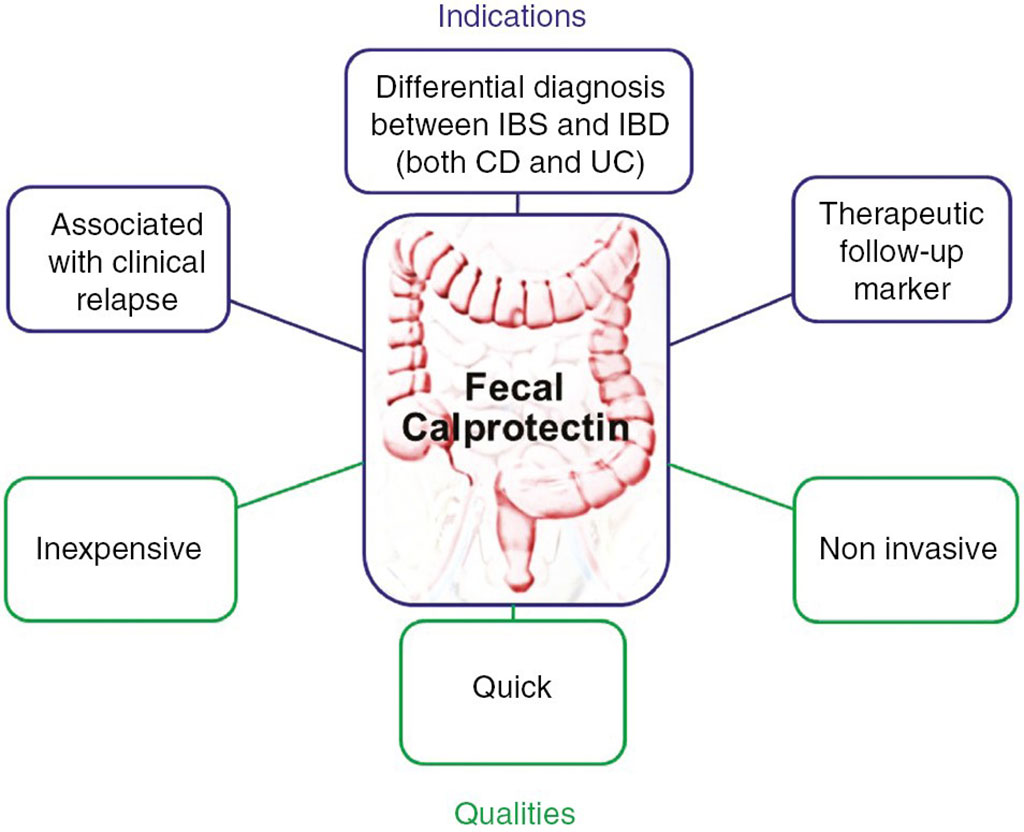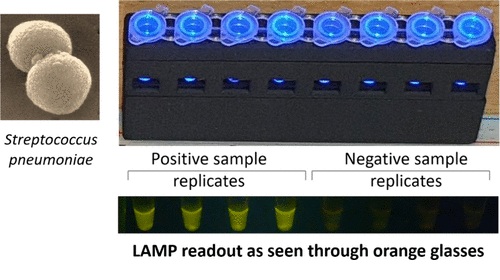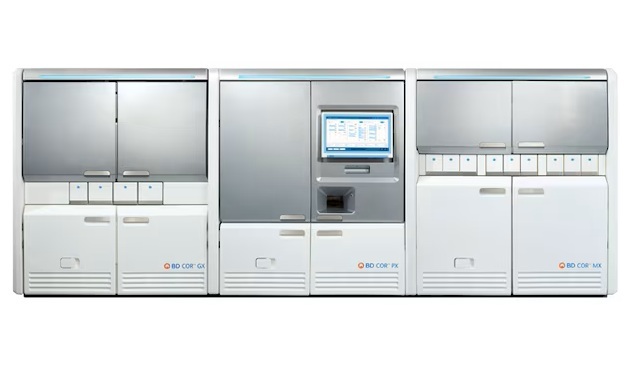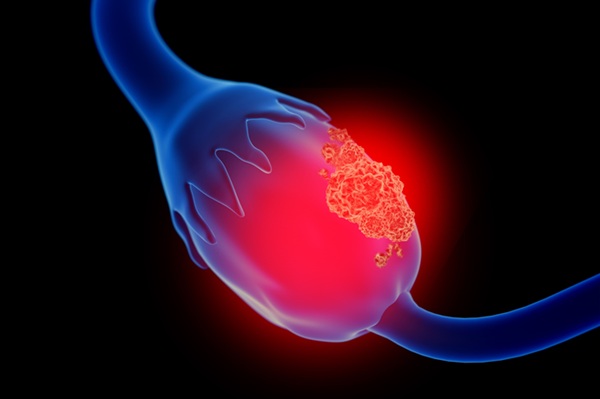Fecal Calprotectin Predicts Therapy Outcome in Ulcerative Colitis Patients
|
By LabMedica International staff writers Posted on 24 Aug 2021 |

Image: Schematic representation of calprotectin indications in clinical practices and main advantages (Photo courtesy of Hôpital Beaujon)
Ulcerative colitis (UC) is a chronic intestinal disorder of unknown etiology and characterized by a relapsing and remitting course. The diagnosis and assessment of the disease activity has been based on clinical symptoms, laboratory measurements, findings of endoscopy and pathological examinations.
The development of a non-invasive and simple biomarker for evaluating the disease activity is considered necessary for the clinical management of UC. Calprotectin is a complex of mammalian proteins found in the cytosol of human neutrophils, monocytes and macrophages. Granulocyte and monocyte adsorptive apheresis (GMA) is widely used as a remission induction therapy for active UC patients.
A large team of Gastroenterologists at the (Asahikawa Medical University, Asahikawa, Japan) and their colleagues conducted a multicenter prospective observation study of patients who received 10 sessions of GMA, twice a week, for five consecutive weeks. A total 36 patients with active UC were enrolled in the study. Fecal calprotectin was measured at entry, one week, two weeks, at the end of GMA and on the day of endoscopy within 24 weeks after GMA.
The patients’ stool samples were homogenized by mixing with a predefined extraction buffer volume. After centrifugation, the supernatants were subjected to a fluorescence enzyme immunoassay using EliA Calprotectin 2 (Thermo Fisher Scientific, Tokyo, Japan). Laboratory values, including the white blood cell (WBC) count and C- reactive protein (CRP) level were also measured at the same time points as FC measurement: at entry, one and two weeks and at the end of GMA and on the day when endoscopy was performed within 24 weeks after GMA. The team analyzed the relationships between the clinical outcome (clinical remission [CR] and endoscopic remission [ER]) and the change in FC concentration.
The investigators reported that the overall CR and ER rates were 50.0% and 19.2%, respectively. After GMA, the median FC concentration in patients with ER was significantly lower than that in patients without ER (469 mg/kg versus 3,107 mg/kg). When the cut-off value of FC concentration was set at 1,150 mg/kg for assessing ER after GMA, the sensitivity and specificity were 0.8 and 0.81, respectively. The FC concentration had significantly decreased by one week. An ROC analysis demonstrated that the reduction rate of FC (ΔFC) at one week was the most accurate predictor of CR at the end of GMA (AUC = 0.852). When the cut-off value of ΔFC was set at ≤ 40% at one week for predicting CR at the end of GMA, the sensitivity and specificity were 76.9% and 84.6%, respectively.
The authors concluded that they had evaluated the utility of FC as a biomarker for assessing ER after GMA and predicting CR in the early phase during GMA in patients with active UC. The findings will benefit patients with active UC by allowing them to avoid unnecessary invasive procedures and will help establish new strategies for GMA. The study was published on August 6, 2021 in the journal BMC Gastroenterology.
Related Links:
Asahikawa Medical University
Thermo Fisher Scientific
The development of a non-invasive and simple biomarker for evaluating the disease activity is considered necessary for the clinical management of UC. Calprotectin is a complex of mammalian proteins found in the cytosol of human neutrophils, monocytes and macrophages. Granulocyte and monocyte adsorptive apheresis (GMA) is widely used as a remission induction therapy for active UC patients.
A large team of Gastroenterologists at the (Asahikawa Medical University, Asahikawa, Japan) and their colleagues conducted a multicenter prospective observation study of patients who received 10 sessions of GMA, twice a week, for five consecutive weeks. A total 36 patients with active UC were enrolled in the study. Fecal calprotectin was measured at entry, one week, two weeks, at the end of GMA and on the day of endoscopy within 24 weeks after GMA.
The patients’ stool samples were homogenized by mixing with a predefined extraction buffer volume. After centrifugation, the supernatants were subjected to a fluorescence enzyme immunoassay using EliA Calprotectin 2 (Thermo Fisher Scientific, Tokyo, Japan). Laboratory values, including the white blood cell (WBC) count and C- reactive protein (CRP) level were also measured at the same time points as FC measurement: at entry, one and two weeks and at the end of GMA and on the day when endoscopy was performed within 24 weeks after GMA. The team analyzed the relationships between the clinical outcome (clinical remission [CR] and endoscopic remission [ER]) and the change in FC concentration.
The investigators reported that the overall CR and ER rates were 50.0% and 19.2%, respectively. After GMA, the median FC concentration in patients with ER was significantly lower than that in patients without ER (469 mg/kg versus 3,107 mg/kg). When the cut-off value of FC concentration was set at 1,150 mg/kg for assessing ER after GMA, the sensitivity and specificity were 0.8 and 0.81, respectively. The FC concentration had significantly decreased by one week. An ROC analysis demonstrated that the reduction rate of FC (ΔFC) at one week was the most accurate predictor of CR at the end of GMA (AUC = 0.852). When the cut-off value of ΔFC was set at ≤ 40% at one week for predicting CR at the end of GMA, the sensitivity and specificity were 76.9% and 84.6%, respectively.
The authors concluded that they had evaluated the utility of FC as a biomarker for assessing ER after GMA and predicting CR in the early phase during GMA in patients with active UC. The findings will benefit patients with active UC by allowing them to avoid unnecessary invasive procedures and will help establish new strategies for GMA. The study was published on August 6, 2021 in the journal BMC Gastroenterology.
Related Links:
Asahikawa Medical University
Thermo Fisher Scientific
Latest Hematology News
- ADLM’s New Coagulation Testing Guidance to Improve Care for Patients on Blood Thinners
- Viscoelastic Testing Could Improve Treatment of Maternal Hemorrhage
- Pioneering Model Measures Radiation Exposure in Blood for Precise Cancer Treatments
- Platelets Could Improve Early and Minimally Invasive Detection of Cancer
- Portable and Disposable Device Obtains Platelet-Rich Plasma Without Complex Equipment
- Disposable Cartridge-Based Test Delivers Rapid and Accurate CBC Results
- First Point-of-Care Heparin Monitoring Test Provides Results in Under 15 Minutes

- New Scoring System Predicts Risk of Developing Cancer from Common Blood Disorder
- Non-Invasive Prenatal Test for Fetal RhD Status Demonstrates 100% Accuracy
- WBC Count Could Predict Severity of COVID-19 Symptoms
- New Platelet Counting Technology to Help Labs Prevent Diagnosis Errors
- Streamlined Approach to Testing for Heparin-Induced Thrombocytopenia Improves Diagnostic Accuracy
- POC Hemostasis System Could Help Prevent Maternal Deaths
- New Test Assesses Oxygen Delivering Ability of Red Blood Cells by Measuring Their Shape
- Personalized CBC Testing Could Help Diagnose Early-Stage Diseases in Healthy Individuals
- Non-Invasive Test Solution Determines Fetal RhD Status from Maternal Plasma
Channels
Molecular Diagnostics
view channel
New Diagnostic Method Detects Pneumonia at POC in Low-Resource Settings
Pneumonia continues to be one of the leading causes of death in low- and middle-income countries, where limited access to advanced laboratory infrastructure hampers early and accurate diagnosis.... Read more
Blood Immune Cell Analysis Detects Parkinson’s Before Symptoms Appear
Early diagnosis of Parkinson’s disease remains one of the greatest challenges in neurology. The condition, which affects nearly 12 million people globally, is typically identified only after significant... Read moreHematology
view channel
ADLM’s New Coagulation Testing Guidance to Improve Care for Patients on Blood Thinners
Direct oral anticoagulants (DOACs) are one of the most common types of blood thinners. Patients take them to prevent a host of complications that could arise from blood clotting, including stroke, deep... Read more
Viscoelastic Testing Could Improve Treatment of Maternal Hemorrhage
Postpartum hemorrhage, severe bleeding after childbirth, remains one of the leading causes of maternal mortality worldwide, yet many of these deaths are preventable. Standard care can be hindered by delays... Read more
Pioneering Model Measures Radiation Exposure in Blood for Precise Cancer Treatments
Scientists have long focused on protecting organs near tumors during radiotherapy, but blood — a vital, circulating tissue — has largely been excluded from dose calculations. Each blood cell passing through... Read moreImmunology
view channel
Blood-Based Liquid Biopsy Model Analyzes Immunotherapy Effectiveness
Immunotherapy has revolutionized cancer care by harnessing the immune system to fight tumors, yet predicting who will benefit remains a major challenge. Many patients undergo costly and taxing treatment... Read more
Signature Genes Predict T-Cell Expansion in Cancer Immunotherapy
Modern cancer immunotherapies rely on the ability of CD8⁺ T cells to rapidly multiply within tumors, generating the immune force needed to eliminate cancer cells. However, the biological triggers behind... Read moreMicrobiology
view channel
High-Throughput Enteric Panels Detect Multiple GI Bacterial Infections from Single Stool Swab Sample
Gastrointestinal (GI) infections are among the most common causes of illness worldwide, leading to over 1.7 million deaths annually and placing a heavy burden on healthcare systems. Conventional diagnostic... Read more
Fast Noninvasive Bedside Test Uses Sugar Fingerprint to Detect Fungal Infections
Candida bloodstream infections are a growing global health threat, causing an estimated 6 million cases and 3.8 million deaths annually. Hospitals are particularly vulnerable, as weakened patients after... Read morePathology
view channel
New Molecular Analysis Tool to Improve Disease Diagnosis
Accurately distinguishing between similar biomolecules such as proteins is vital for biomedical research and diagnostics, yet existing analytical tools often fail to detect subtle structural or compositional... Read more
Tears Offer Noninvasive Alternative for Diagnosing Neurodegenerative Diseases
Diagnosing and monitoring eye and neurodegenerative diseases often requires invasive procedures to access ocular fluids. Ocular fluids like aqueous humor and vitreous humor contain valuable molecular information... Read moreTechnology
view channel
Cell-Sorting Device Uses Electromagnetic Levitation to Precisely Direct Cell Movement
Sorting different cell types—such as cancerous versus healthy or live versus dead cells—is a critical task in biology and medicine. However, conventional methods often require labeling, chemical exposure,... Read more
Embedded GPU Platform Enables Rapid Blood Profiling for POC Diagnostics
Blood tests remain a cornerstone of medical diagnostics, but traditional imaging and analysis methods can be slow, costly, and reliant on dyes or contrast agents. Now, scientists have developed a real-time,... Read moreIndustry
view channel
Qiagen Acquires Single-Cell Omics Firm Parse Biosciences
QIAGEN (Venlo, Netherlands) has entered into a definitive agreement to fully acquire Parse Biosciences (Seattle, WA, USA), a provider of scalable, instrument-free solutions for single-cell research.... Read more
Puritan Medical Products Showcasing Innovation at AMP2025 in Boston
Puritan Medical Products (Guilford, ME, USA), the world’s most trusted manufacturer of swabs and specimen collection devices, is set to exhibit at AMP2025 in Boston, Massachusetts, from November 11–15.... Read more
Advanced Instruments Merged Under Nova Biomedical Name
Advanced Instruments (Norwood, MA, USA) and Nova Biomedical (Waltham, MA, USA) are now officially doing business under a single, unified brand. This transformation is expected to deliver greater value... Read more






















